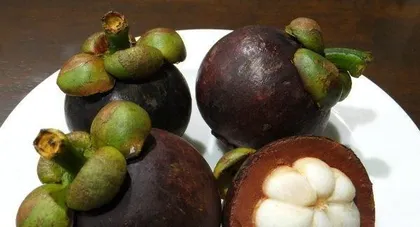As a popular tropical fruit, mangosteen is loved by many. However, many people are not familiar with the growth and cultivation process of mangosteen. This article will introduce you to how to grow your own mangosteen fruit by planting mangosteen seeds.

I. How to Select Mangosteen Seeds
When selecting mangosteen seeds, be sure to choose fresh, healthy fruits and rinse them clean. Gently cut open the rind with a knife, remove the seed, and let it air-dry for 1-2 days until the surface becomes hard.
II. Soaking for Germination
Soak the dried mangosteen seeds in water for 24 hours to effectively promote germination. After soaking, take them out and place them in a damp gauze or cotton cloth in a cool, ventilated place. You should see sprouts in about 2-3 days.

III. Selecting Soil
Mangosteen prefers loose, fertile, and well-draining soil. When selecting soil, you can mix soil with rotten leaves, and then add some sand and mature compost.
IV. Filling the Soil
Fill the selected soil into a planting pot, compact the soil, and leave some grooves on the surface for placing the seeds next.
V. Placing the Seeds
Place the soaked mangosteen seed into the groove and cover it lightly with a layer of soil. To prevent root rot from overwatering, you can place a sponge at the bottom.

VI. Watering Timely
Mangosteen has high water requirements, but do not overwater. Watering in a timely manner can keep the soil moist but not waterlogged.
VII. Keeping Warm
The optimal temperature for mangosteen growth is 25-30°C, so it is important to maintain a suitable temperature. You can hang a green plant growth light above the planting pot to provide sufficient light and warmth.
VIII. Fertilizing
Fertilize the mangosteen every once in a while. You can choose compound fertilizer or organic fertilizer, and add appropriate amounts of trace elements.
IX. Pruning Timely
When the mangosteen tree reaches a certain height, prune the canopy in a timely manner to maintain a beautiful tree shape. You can prune the branches into an appropriate shape to promote the growth of new branches.
X. Pest Control
Mangosteen is often attacked by pests such as ants, termites, and aphids. You can use various methods for prevention and control, such as using pesticides or hanging yellow sticky traps.
XI. Determining Ripeness
Harvest the mangosteen when the fruit has reached a certain size, the skin has changed color, and the texture is relatively soft.
XII. Harvesting Carefully
Be very careful when harvesting mangosteen fruit, do not use excessive force. You can use scissors or your hand to gently cut the fruit off, avoiding damage to the branches and canopy.
XIII. Proper Storage
Store the harvested mangosteen fruit promptly to avoid sunburn or moisture. It is best to place it in a cool, ventilated place and consume or process it as soon as possible.
XIV. Enjoying the Fruits of Your Labor
After a long wait and careful nurturing, you can finally enjoy the mangosteen fruit you have grown yourself. Experience the charm of nature and the sweetness of labor.
XV.
Growing mangosteen seeds can not only yield fresh mangosteen fruit but also bring interesting and enjoyable experiences. I hope this article is helpful to readers who want to try growing mangosteen seeds.